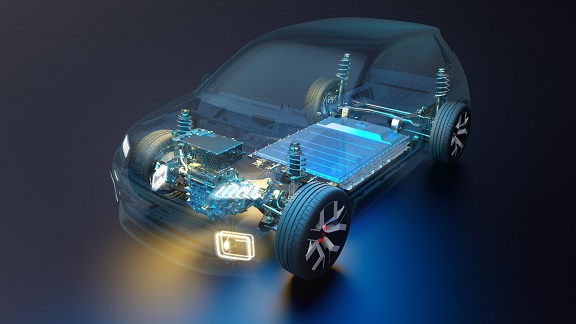The common platform for Renault’s electric vehicle range goes through static chamber testing as well as proving ground trials
To further develop and fine-tune the future electric Renault 5, engineers at the company are currently testing its first nine prototypes.,
Known as mules, their platform, power train and battery are technically the same as the future production vehicle. With a design based on the Clio silhouette, the mules do not yet look like the future model
Alternating between static and dynamic fine-tuning and endurance testing, the mules will be put through their paces this winter in low grip conditions in Arvidsjaur in Swedish Lapland, as well as average-to-high grip conditions at the Renault technical centres in Lardy and Aubevoye (Normandy).
Aubevoye Technical Centre
The Renault site in Aubevoye is unique in that it has the capabilities to reproduce any types of stress that the vehicles will be put through at the hands of customers: As well as its proving grounds covering 613 hectares with 60km of road on 35 tracks, 42 test lines, 2 wind tunnels and 18 corrosion chambers, all hidden within 272 hectares of forest to shield the prototypes from prying eyes.
Winter Proving Ground
Testing carried out in the Arvidsjaur region in the far north of Sweden is ideal for putting the vehicle under extreme stress. In these Arctic conditions, the vehicle’s mechanical performance is put to the test to make sure that the mules can withstand such temperatures and conditions. The engine along with other parts – including the batteries – are placed under close surveillance. Checks are also carried out on the performance of on-board systems such as heating, demisting and defrosting, and to make sure that the brakes, shock absorbers, and ESC (Electronic Stability Control) perform as they should on snow. A vast array of parameters that cannot be replicated in a testing facility, where only real-world cold-weather testing will suffice.
“Tests being carried out on rolling chassis prototypes will help us confirm decisions made in terms of handling on the forthcoming Renault 5 electric. So far, the early test drives are a clear indication that we’ll be ready to push ahead with testing through to its commercial launch set for next year,” says Jérémie Coiffier, Head of Engineering of the B EV Family
The CMF-B EV platform
The future electric Renault 5 will make use of the new CMF-B EV platform, which takes 70% of the parts featured on the CMF-B platform used for the Clio and Captur.
The new modular platform is easier to make, develop, and optimize the performance of next-generation B-segment electric vehicles. The advantages of the new design mean that a new generation of electric vehicles can be created, with adjustable tracks and wheelbase to allow for different body types and styles. The optimized chassis with a multi-link rear axle and a lower centre of gravity with batteries installed under the floor will ensure greater dynamic performance.
The CMF-B EV platform engine compartment is more compact because the parts used for an electric motor are smaller than those used on an internal combustion engine.
By pooling together the different functions performed by the main drivetrain components in a single box, the engine is smaller and lighter. The switch from the 12 modules seen on the Zoe battery to 4 large modules means the architecture is simpler and 15kg lighter.
With so many changes having been made to the fundamental platform that will drive future Renaults of this size, a lot of focus is being placed by the company on both environmental testing in chambers and on dynamometers at its Normandy facility as well as full winter proving ground testing in Sweden before it is ready to be used in production vehicles.
- UK manufacturing steps up to COVID-19 crisis - April 2, 2020
- Clustering Innovation - March 12, 2020
- A Global Monitor - March 6, 2020

